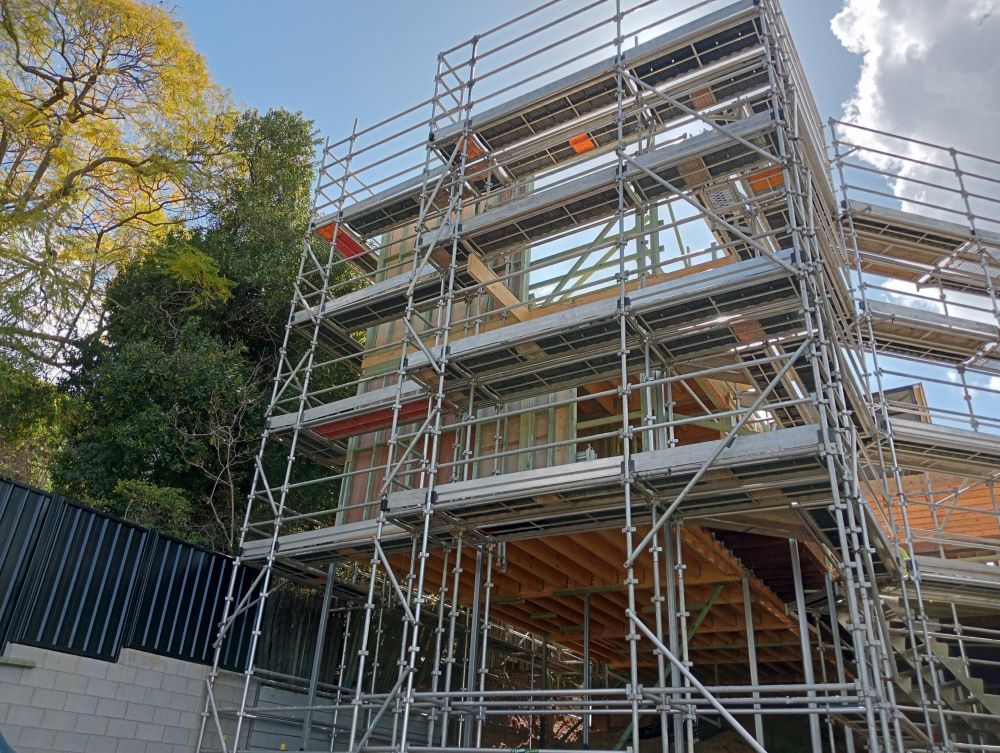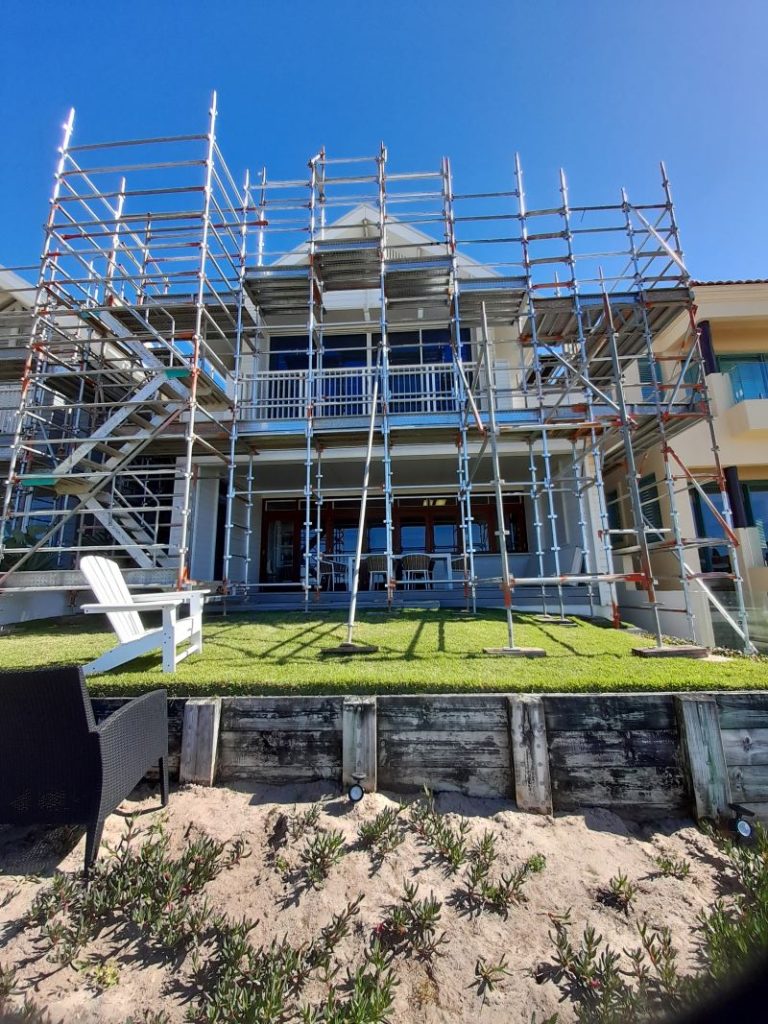Comprehensive Guide to Choosing Between Aluminium and Steel Scaffolding for Construction Projects
Choosing the right scaffold for any construction or renovation project is vital for ensuring both safety and operational efficiency. Two of the most widely used materials are aluminium scaffolding and steel scaffolding. Each type presents its own set of unique characteristics, benefits, and ideal applications, making it essential to understand their differences. This extensive guide will delve into a thorough comparison of these two materials, highlighting their individual features, advantages, and the best scenarios for use, enabling you to make an informed decision tailored to your specific project needs.
When evaluating scaffold options, it’s essential to identify the unique benefits of aluminium and steel scaffolding. This guide will provide an in-depth exploration of these materials’ attributes, arming you with the knowledge necessary to make a well-informed choice that aligns with your project’s specific requirements and safety standards.

Maximize Project Efficiency with Aluminium Scaffolding Benefits
Aluminium scaffolding is widely recognized for its lightweight design and exceptional ease of handling, making it an ideal choice for projects that necessitate frequent relocation and rapid assembly. The individual components of aluminium scaffolding are significantly lighter than their steel counterparts, which greatly enhances both transportation and maneuverability at the construction site. This advantage is particularly critical for contractors who operate in tight spaces or require scaffolding to be repositioned often, ultimately leading to a more streamlined workflow and increased operational efficiency.
Moreover, aluminium scaffolding boasts impressive corrosion resistance, making it an excellent selection for outdoor projects or environments with high humidity. This characteristic ensures that the scaffold maintains its structural integrity and visual appeal over time, even when exposed to challenging weather conditions. The enhanced corrosion resistance of aluminium scaffolding significantly contributes to its long-term reliability and performance, which is especially important for projects subject to moisture or adverse weather patterns.
The setup and dismantling processes for aluminium scaffolding are generally quick and straightforward, thanks to components that are specifically designed for easy assembly. This efficiency can lead to substantial time savings on-site, particularly for projects operating under tight deadlines. By minimizing the time dedicated to setup and takedown, construction teams can concentrate more on executing their tasks effectively and safely, thus boosting overall productivity.
Harness the Strength and Stability of Steel Scaffolding for Your Projects
Steel scaffolding is renowned for its superior strength and exceptional load-bearing capacity, making it a robust choice for construction projects that demand solid support. This material is specifically engineered to withstand significant weight and perform reliably in harsh conditions, providing a secure platform for workers, even in the most challenging environments. Its inherent rigidity and strength make it the preferred option for projects that involve heavy machinery or substantial building materials, ensuring safety and dependability at elevated heights.
The durability of steel scaffolding is a critical advantage, particularly in extreme weather conditions or high-traffic areas where the scaffold may experience intense use. Unlike lighter materials, steel scaffolding is crafted to resist bending or deformation, guaranteeing a secure working environment for personnel. This dependable nature fosters confidence and a sense of safety among construction teams, allowing them to work with peace of mind.
Additionally, steel scaffolding is recognized for its cost-effective longevity. Although the initial investment may be higher compared to aluminium, the durability and extended lifespan of steel scaffolding make it a financially prudent choice over time. Its ability to withstand repeated use results in fewer replacement or maintenance requirements, ultimately yielding significant savings in the long run.
When weighing the options between aluminium and steel scaffolding, it’s crucial to evaluate the specific requirements of your project. Factors such as material weight, scaffold height and dimensions, and the environmental conditions of the job site will heavily influence your final decision.
Engaging with your scaffold rental provider can offer valuable insights, assisting you in selecting the most appropriate option for your project’s distinct demands. For more information on when scaffolding is essential and the types of projects that may require it, refer to our article on when to hire scaffolding.
Critical Factors to Evaluate When Choosing Scaffold Material
Several key factors must be taken into account when determining the choice between aluminium and steel scaffolding. A thorough understanding of each scaffold material’s strength and durability, weight and portability, and cost and affordability will empower you to make an informed decision that aligns with your project’s specific requirements and limitations.
Evaluating Strength and Durability Attributes of Scaffold Materials
Both aluminium and steel scaffolds are acknowledged for their strength and durability; however, they possess distinct characteristics that may influence your selection. Steel scaffolding is typically regarded as having superior strength and load-bearing capabilities in comparison to aluminium scaffolding. The robust composition of steel enables it to manage heavy loads and provide stability in demanding construction scenarios.
On the other hand, aluminium scaffolds are also strong and durable, but they may not support exceptionally heavy loads as effectively as steel. Thus, it is essential to carefully assess your project’s weight requirements to determine which scaffold material will best satisfy your operational needs and safety standards.
Examining Weight and Portability Characteristics of Scaffolding Choices
Aluminium scaffolds enjoy a significant advantage when it comes to weight and portability. Their lightweight design allows for much easier handling and transport compared to heavier steel options. This quality is particularly beneficial for smaller-scale projects or situations where scaffolding needs frequent repositioning, as it lessens physical strain on workers and enhances overall productivity on the job site.
While steel scaffolds may be heavier, they still provide a measure of portability; however, more effort and manpower are generally required for transportation. Understanding the relevant weight and portability aspects of your project will help ensure efficient and safe scaffold use throughout your operations, ultimately improving job site dynamics.
Uncover the Unique Benefits of Aluminium Scaffolding
After evaluating various scaffold materials, aluminium scaffolding reveals a multitude of distinct advantages that position it as a preferred choice for a wide range of construction and renovation tasks.
Experience Effortless Handling with Aluminium’s Lightweight Design
A key benefit of aluminium scaffolding is its lightweight construction. In contrast to steel scaffolding, aluminium is considerably lighter, which enhances its manageability and transportability. This inherent quality not only speeds up the assembly and disassembly process but also contributes to a more efficient workflow, ultimately reducing the overall project duration. Moreover, the ease of handling significantly boosts worker productivity, mitigating the risk of fatigue-related accidents and enhancing overall safety on-site.
Enjoy Long-lasting Performance with Exceptional Corrosion Resistance
Aluminium scaffolding is noted for its remarkable corrosion resistance, making it an outstanding choice for use in diverse environmental conditions. Unlike steel, which is prone to rust and deterioration, aluminium’s natural resistance to corrosion ensures it retains its structural integrity even when exposed to moisture or outdoor elements. This feature is particularly beneficial for projects conducted in damp or humid climates, ensuring that the scaffold remains safe and effective for the duration of its use.
Boost Project Efficiency with Streamlined Assembly and Disassembly
Another significant advantage of aluminium scaffolding lies in its quick assembly and disassembly capabilities. The lightweight components, user-friendly connectors, and locking mechanisms are designed to facilitate a swift setup process. This efficiency is especially valuable for projects that are time-sensitive or where scaffolding needs to be relocated frequently. The rapid assembly and disassembly associated with aluminium scaffolding not only saves time but also helps minimize overall labour costs, providing an economic edge for project managers aiming to optimize their resources.

Discover the Unique Benefits of Steel Scaffolding for Your Construction Needs
Steel scaffolding offers numerous advantages that make it a top choice for contractors and builders when determining the best scaffold for their construction endeavors.
Benefit from Unmatched Strength and Load Capacity with Steel Scaffolding
One of the key advantages of steel scaffolding is its unparalleled strength and load capacity. Steel is well-regarded for its exceptional durability and ability to support substantial loads, making it ideal for projects where scaffolding must bear significant weights. Steel scaffold systems are meticulously engineered to provide workers with a stable and secure platform, ensuring their safety while working at elevated heights and in demanding environments.
Experience Remarkable Durability in Challenging Environmental Conditions
Steel scaffolding is designed to withstand a variety of environmental factors, making it suitable for use in harsh conditions. It is resilient against adverse weather elements, including high winds, heavy rain, and extreme temperature fluctuations. This durability ensures that the scaffold remains stable and secure, thus creating a safe working environment for construction teams. Whether undertaking projects such as gutter replacements or other tasks requiring scaffolding in challenging conditions, steel scaffolding is built to withstand the rigours of the job.
Explore the Cost-Effective Longevity of Steel Scaffolding
Steel scaffolding is widely recognized for its remarkable longevity and overall cost-effectiveness. Its inherent durability guarantees that the scaffold can endure numerous construction projects over extended periods. Unlike other materials, steel scaffolding does not degrade quickly, which reduces the need for frequent replacements or repairs.
To determine the best scaffold material for your specific project, it is crucial to carefully evaluate your needs, consult with industry professionals, and consider safety standards alongside budgetary constraints.
Strategic Steps to Select the Ideal Scaffold for Your Construction Project
Selecting the appropriate scaffold for your project involves a meticulous assessment of your unique requirements. By thoroughly evaluating the specifics of your project, consulting with professionals, and considering safety measures and budget limitations, you can arrive at a well-informed decision that aligns with your operational objectives and enhances project efficiency.
Thoroughly Assess Your Project Requirements to Make the Right Scaffold Choice
Begin by evaluating the particulars of your project and the tasks that require scaffold support. Important considerations include the height and configuration of the structure, the anticipated length of the project, and any specialized needs that may arise.
For instance, scaffolding for a multi-storey apartment complex will have different specifications compared to scaffolding or guard rails needed for gutter replacement. By thoroughly understanding your project needs, you can determine the appropriate type and configuration of scaffold that will best meet your operational goals, ensuring safety and efficiency on-site.
The Crucial Role of Professional Consultation in Scaffold Selection
Engaging with experts, such as Cando Scaffolding, is highly recommended when navigating the complexities of scaffold selection. Our extensive industry experience provides invaluable guidance, helping you comply with safety standards and regulatory requirements throughout your project.
Contact us today or request a quote to begin the process of selecting the ideal scaffold for your project.
The post-Scaffold Choices: Aluminium vs Steel for Your Project appeared first on https://writebuff.com/.
The Article Aluminium vs. Steel: Choosing the Best Scaffold for Your Project Was Found On https://limitsofstrategy.com
Comments are closed


I love how you’ve broken down the pros and cons of aluminium versus steel scaffolding—it’s like a showdown between the lightweight champion and the heavyweight contender! Personally, I’ve always leaned towards aluminium for smaller projects. It’s a breeze to set up, and trust me, when you’re trying to balance on shaky ground with a paintbrush in one hand and your morning coffee in the other, every ounce counts!